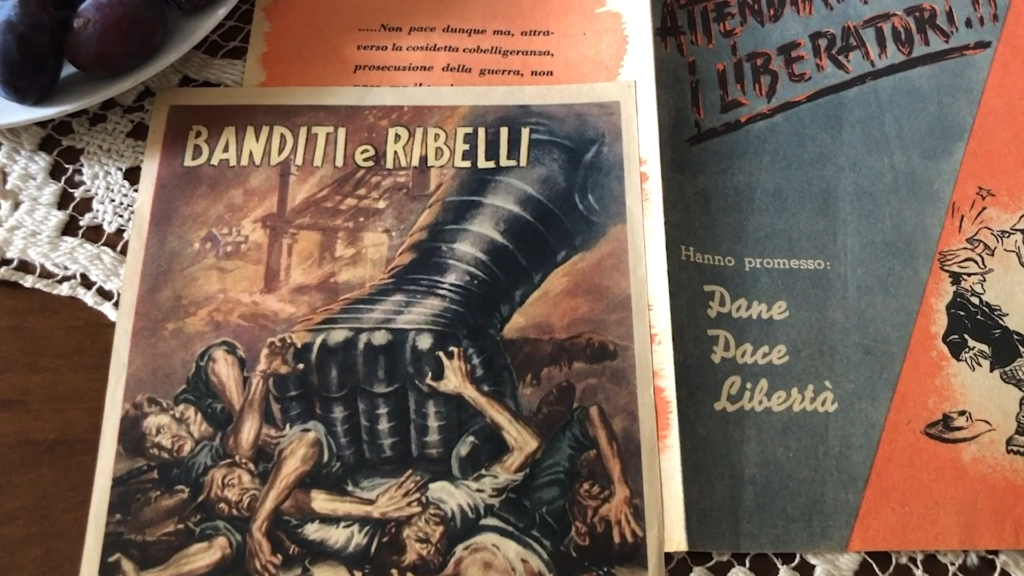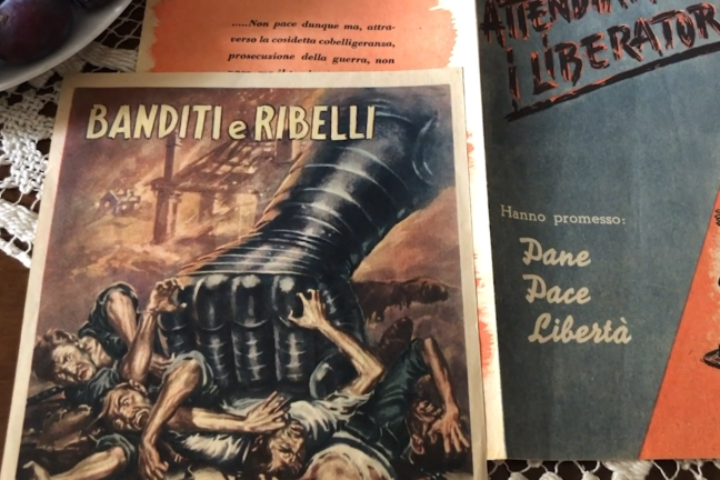
Paola E. Boccalatte
Museologist at Museo diffuso della Resistenza, della Deportazione, della Guerra, dei Diritti e della Libertà (Turin, Italy)
Museums have no borders,
they have a network
December 4, 2020
We are always looking for new ideas!
To participate in our ICOM Voices
call for contributions, click here.
Keywords: Public History; Memory Studies; Co-curation; Participation; WW2.
These are some of the moving, often painful, and sometimes controversial objects collected by the Museo della Resistenza (Museum of the Resistance) in Turin, Italy, for ‘La Staffetta della Memoria’ (The Relay of Memory) project. The project’s aim is to gather first-hand World War II testimonies or stories, delivered by friends, children, and grandchildren of people who lived during that period, in order to preserve their memory of that time.

Co-curation at the Museo della Resistenza
The Museo della Resistenza is an interpretation centre, which is virtually linked with a network of urban sites related to World War II, Deportation, and the Italian Liberation struggle (e.g. air-raid shelters, factories in which strikes took place, the Jewish ghetto of Turin, etc.), and provides its visitors with a multimedia interactive experience. It has no collection except for two iconic objects: a pedal-operated machine used to produce underground press and a chair for executions. The absence of a collection has been keenly felt by some elder visitors, who would have expected a more traditional museum with World War II memorabilia; yet, it is also an opportunity to provide a temporary space where visitors can engage with objects, benefit from their evocative power, and participate in the preservation of history through their own memories.
Conceived by Francesca Toso, the museum’s former exhibition manager, the first edition of ‘La Staffetta della Memoria’ project took place on 25 April 2017. The event attracted both Partisans well-known to the local community and young people, demonstrating that history and memory are equally relevant for new generations, who did not live through those times.

The impact of the crisis
At the beginning of 2020, in collaboration with the Piedmontese Institute for the History of Resistance and Contemporary Society ‘Giorgio Agosti’, the museum sought to implement new participatory practices with a second edition of the project: anyone who owned an object from the past (photographs, notebooks, everyday tools…) bearing memories related to World War II, the Resistance or the Italian Liberation, and wanted to tell its story, had the opportunity to answer the call launched for the ‘La Staffetta della Memoria’ project.

When the museum was closed in March 2020 – like all other cultural institutions in Italy – we had to consider alternatives to an onsite exhibition, which was not allowed during lockdown. Rather than cancel the event, we immediately launched a call for participation on the museum’s website and social media, asking citizens to send us a short self-produced video in which they could tell the story of their object.
We received 20 proposals and accepted all of them as they were both consistent and relevant. The first contributions were broadcasted on 25 April (Italian Liberation day from the Nazi occupation in 1945); the others followed on the museum’s YouTube channel every Tuesday until 8 September (commemorating the announcement of the Armistice of Italy with the Allies, and the beginning of the Resistance, on that same day in 1943).
Each video was introduced with a short address from the Director of the Piedmontese Institute for the History of Resistance, Luciano Boccalatte, who provided historical context.
An opportunity
Despite the challenges we faced with the museum’s closure, we succeeded in launching a low-cost participatory project of Public History in which the citizens chose independently what to tell and how to tell it. We managed to create a relevant experience for our communities, in which citizens were the co-curators.
The digital edition of the exhibition allowed us to share precious testimonies and memories from a significant historical period. A third edition of the project is currently under consideration, in which we would combine the onsite exhibition and online presentations with a view to enhancing the participatory and inclusive nature of the project.
References and resources
‘La Staffetta della Memoria’ YouTube Playlist: www.youtube.com/user/DIFFUSO2003.
The co-curators: www.museodiffusotorino.it/news/6768/la-staffetta-della-memoria.
_________________
Opinions expressed in the article do not commit ICOM in any way and are the responsibility of its author.
